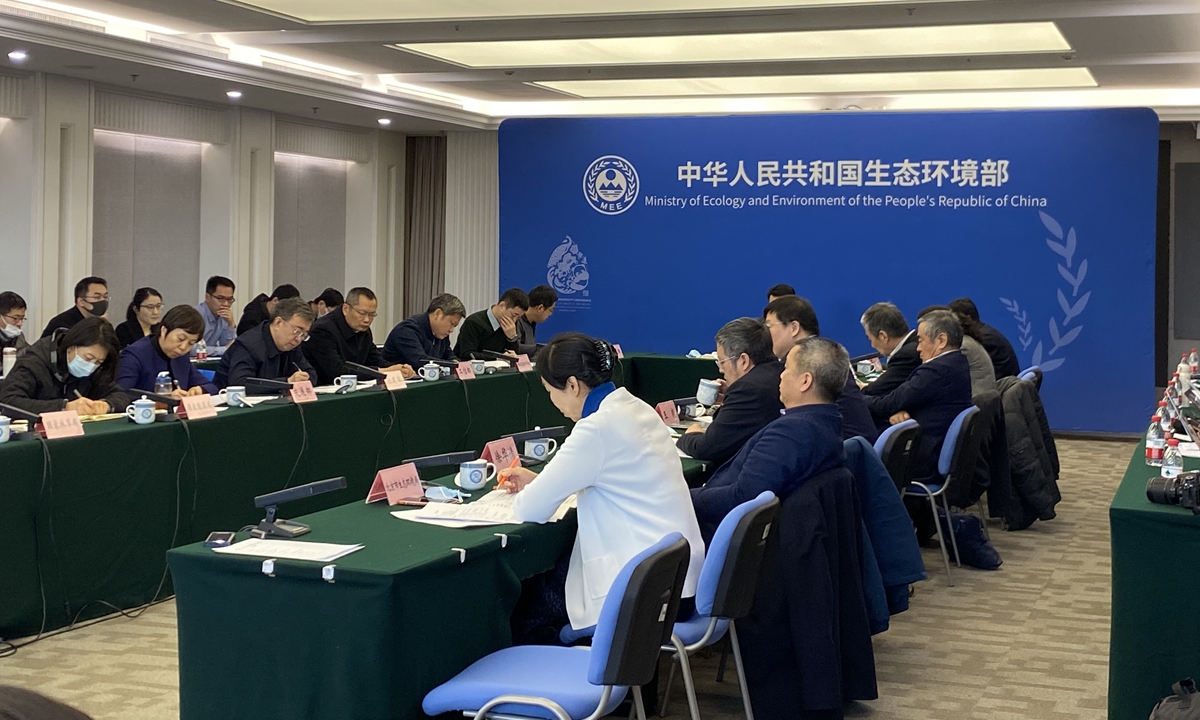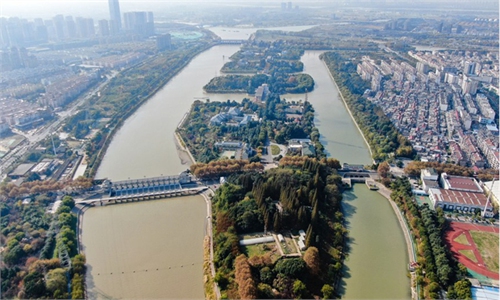IN-DEPTH / IN-DEPTH
China’s governmental departments vow to cut carbon emissions with comprehensive efforts

Photo: Shan Jie/GT
China should firmly conduct the transition to low-carbon green development, because China is a responsible big country and will provide its wisdom, plans and contribution to the global governance, Zhao Yingmin, deputy minister of the Ministry of Ecology and Environment (MEE), said at the opening ceremony of the institute on Monday.
The Monday meeting, hosted by the MEE, was attended by experts and advisors on climate change, representatives from eight nation-level governmental departments and three local environmental authorities of Beijing, Tianjin and Hebei Province.
In September, China announced it will adopt more vigorous policies and measures so the country will achieve peak carbon dioxide emissions before 2030 and achieve carbon neutrality before 2060.
The goal is followed by China's further commitments for 2030, including lowering more than 65 percent of carbon emissions from the 2005 level, increasing the share of non-fossil fuels in primary energy consumption to around 25 percent, increasing the forest stock volume by 6 billion cubic meters from the 2005 level, and bringing its total installed capacity of wind and solar power to more than 1.2 billion kilowatts.
After China brought forwards its goals in confronting climate change in September, local governments and different industrial sectors have begun to act, according to Liu Yanhua, former Vice Minister of Science and Technology, Counselor of the State Council and Chairman of the National Expert Panel on Climate Change. Liu said the relatively developed cities at eastern coastal China should reach the carbon emission peak first.
To complete China's goal of in 2030 lowering carbon dioxide emissions per unit of GDP by more than 65 percent from the 2005 level during the 14th Five-Year Plan (2021-25), the carbon emission reduction should not be below 19-20 percent, and by the 15th Five-Year Plan be more than 20 percent, He Jiankun, Deputy Director of the National Committee of Experts on Climate Change and former president of Tsinghua University, said during the meeting on Monday.
Industrial sectors, especially the high-energy sectors, should reach a carbon dioxide emissions peak in 2025 to achieve these goals, He said.
He noted technical innovation and financial investment should be enhanced in the energy system to realize China's goal of renewable energy development, which will provide an economic new growth point in the post-pandemic era.
Song Wen, the representative of National Energy Administration, said that during the 14th Five-Year Plan, China would strive to develop and plan hydropower, accelerating projects in Jinsha River, Yalong Rvier and Dadu River.
Compared with 2005, greenhouse emissions per unit of GDP have dropped 48 percent by 2019 in China, equaling a reduction of 5.62 billion tons of CO2 emissions, 11.92 million tons of SO2 emissions and 11.3 million tons of NOx, according to statistics in October.


